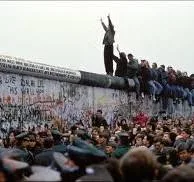The Fall of the Berlin Wall (1989): A Symbol of Freedom and Unity
Background and Construction
The Berlin Wall was erected in 1961 by the German Democratic Republic (GDR) to prevent East Germans from fleeing to West Berlin and, by extension, West Germany. The wall, which spanned approximately 155 kilometers (96 miles), effectively divided the city of Berlin into two, creating a stark physical and ideological barrier between the communist East and the capitalist West.
The construction of the Berlin Wall was a response to the mass exodus of East Germans seeking better economic opportunities and political freedoms in the West. Between 1949 and 1961, an estimated 2.7 million people fled the GDR, significantly weakening the East German economy and embarrassing the Soviet-backed government. The wall, heavily guarded and fortified, became a potent symbol of the Cold War's division.
The Path to Dismantling
Several factors contributed to the eventual fall of the Berlin Wall:
Political Reforms in the Soviet Union: Under the leadership of Mikhail Gorbachev, the Soviet Union introduced policies of glasnost (openness) and perestroika (restructuring) in the 1980s. These reforms aimed to address economic stagnation and promote transparency and political liberalization. Gorbachev's policies also signaled a reduction in Soviet intervention in Eastern Bloc countries, encouraging reformist movements across the region.
Economic Struggles and Public Discontent: The GDR faced severe economic challenges and growing public discontent. Shortages of goods, lack of political freedoms, and widespread dissatisfaction with the government fueled protests and demands for change. By the late 1980s, the East German economy was in dire straits, unable to compete with the more prosperous West Germany.
Mass Protests and Civil Unrest: Throughout 1989, mass protests erupted in several Eastern Bloc countries, including East Germany. The Monday Demonstrations in Leipzig, which began in September 1989, saw tens of thousands of East Germans demanding political reforms, free elections, and the right to travel. The GDR government, facing mounting pressure from its citizens and lacking Soviet support to quell the unrest, was forced to consider significant changes.
Hungary's Open Border: In May 1989, Hungary began dismantling its border fence with Austria, effectively opening a gateway for East Germans to escape to the West. This move set off a chain reaction, with thousands of East Germans traveling to Hungary to seek asylum in West German embassies. The Hungarian border opening undermined the GDR's efforts to control emigration and further destabilized the regime.
The Fall of the Wall
On November 9, 1989, the East German government, in an attempt to ease tensions, announced that citizens could apply for visas to travel abroad. However, a miscommunication during a press conference led to the erroneous declaration that the border was open immediately. Thousands of East Berliners flocked to the wall, demanding to cross into West Berlin.
Overwhelmed and unprepared, border guards eventually opened the gates, allowing jubilant crowds to pass through. Scenes of East and West Berliners celebrating together atop the wall, tearing it down piece by piece, became iconic images broadcast around the world. The fall of the Berlin Wall was not just a physical dismantling but also a powerful symbol of the triumph of freedom over oppression.
Reunification and Aftermath
The fall of the Berlin Wall paved the way for German reunification, which officially took place on October 3, 1990. The reunification process involved significant economic, political, and social challenges, including integrating the vastly different systems of East and West Germany. Despite these difficulties, reunification was widely celebrated as a victory for democracy and human rights.
Beyond Germany, the fall of the Berlin Wall had far-reaching consequences for Europe and the world. It signaled the end of the Cold War and the collapse of communist regimes across Eastern Europe. Countries such as Poland, Czechoslovakia, Hungary, and Romania experienced their own revolutions and transitions to democracy, leading to the enlargement of the European Union and NATO in subsequent decades.
Legacy
The fall of the Berlin Wall remains a powerful symbol of the triumph of freedom and the human spirit. It represents the ability of ordinary people to effect change and overcome seemingly insurmountable barriers. The wall's collapse ushered in a new era of cooperation and unity in Europe, demonstrating the importance of dialogue, reform, and the pursuit of democratic ideals.
Today, remnants of the Berlin Wall stand as a testament to the resilience of those who fought for freedom and the enduring hope for a world without division and oppression. The lessons learned from this historic event continue to inspire efforts toward peace, reconciliation, and the promotion of human rights globally.


